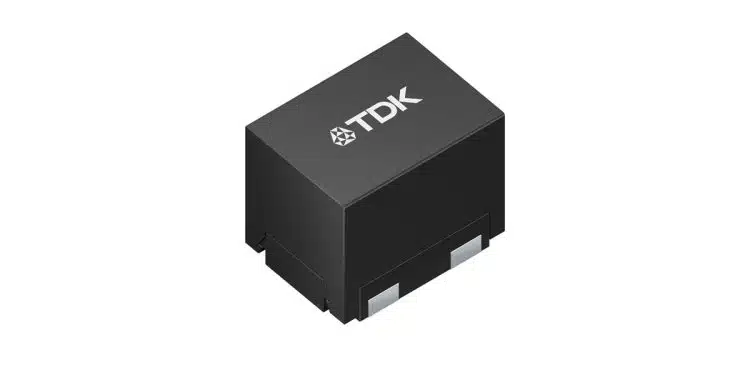TDK Corporation has developed the J404, the world’s first surface-mountable inrush current limiter (ICL) based on PTC (positive temperature coefficient) thermistor technology.
Designed for DC voltages of up to 500 V and AC voltages of up to 350 V, the device (order number B59404J0170A062) automatically and intrinsically limits excessive currents in applications such as DC links and charging devices in electromobility.
Due to the very compact dimensions of 13.5 x 10 x 11 mm (L x W x H), users can save up to 70% space and weight on the PCB with this surface-mount design. The components can also be processed quickly in automated production lines. As a result, the new component is ideally suited for numerous industrial and automotive applications.
The reference temperature at which the device becomes highly resistive is +170 °C, with a heat capacity of 1 J/K and a thermal time constant of 100 s. At room temperature, the electrical resistance is 500 Ω, with a minimum value of 150 Ω. The J404 can switch off a defect (short circuit) up to 100 times, and up to 100,000 cycles when charging and discharging capacitors.
Large capacitors in DC link circuits, found in e-mobility inverters or variable-speed drives in industrial applications, act temporarily like a short circuit at the moment they are switched on. This high energy must not damage other components in the system; the same applies in the event of a defect. A PTC thermistor provides such protection by heating itself due to the high current and becoming highly resistive in a very short time, thereby reducing the current to a safe level.
Features
- Surface mountable (reflow solderable)
- Space and weight savings on PCBs
- Intrinsically safe in case of a failure and resettable
- Qualification according to AEC-Q200
Applications
- Traction inverter for xEV
- Charging and discharging DC link capacitors
- Variable speed drives
- Switched-mode power supplies
































